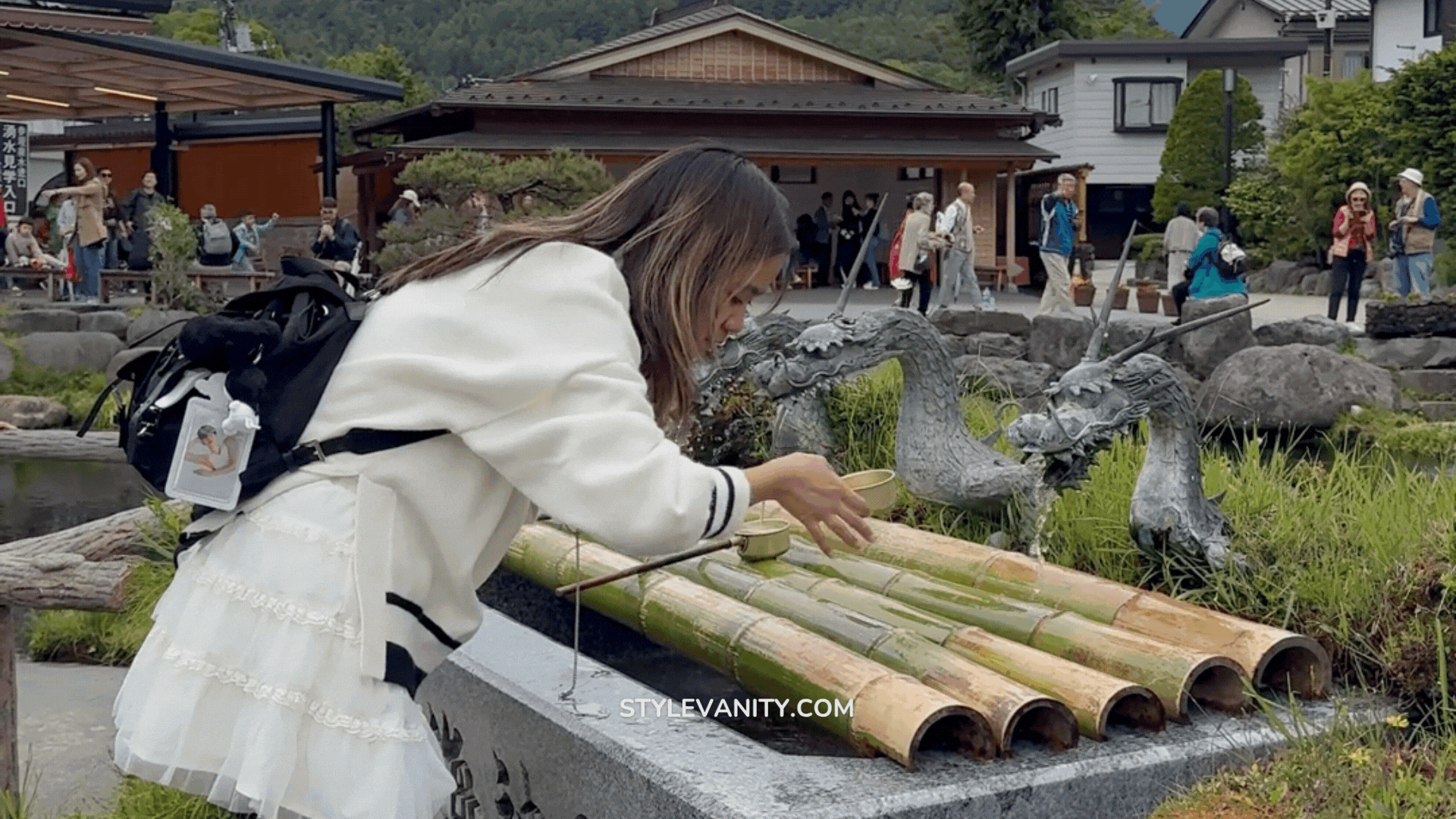Last year, I visited 2 of the Fuji Five Lakes area, full of excitement, ready to take the most iconic shots of Mt. Fuji, and guess what? I barely saw it. Clouds. Everywhere. The kind of visibility that makes you wonder if Mt. Fuji was ever there to begin with. I wrote down tips on when is the best time to visit the Mt. Fuji, so you don’t have to experience this.
Despite not seeing the majestic Mt. Fuji, was still worth it. Because I saw the underrated gem: Oshino Hakkai, a small, peaceful village nestled between Lake Kawaguchiko and Lake Yamanakako. And yes, it looks like it’s straight out of a Studio Ghibli film.
So, what exactly is Oshino Hakkai?
Oshino Hakkai (忍野八海) literally means “Eight Seas of Oshino,” and it refers to the eight spring-fed ponds in the village. These aren’t your average backyard ponds. They’re filled with crystal-clear water that comes from Mt. Fuji’s melted snow, filtered naturally over decades through layers of volcanic rock.
The result? Water so clear and pure, you can literally see the bottom of each pond, the fish, and even reflections of Mt. Fuji on a good day. Locals believe this water is sacred. You can even drink from a designated spring called the Waku Pond. The water is sweet, ice-cold, and refreshing, especially during Japan’s humid seasons. Drinking from it is free, but if you want to take home some, you should bring a water bottle. Or you can buy one in the gift shop which cost JPY100.

 Me drinking the pure spring water
Me drinking the pure spring waterWhat’s the vibe?
If you’re tired of the chaos of Tokyo or even the tourist-packed paths of Gotemba and Kawaguchiko, Oshino Hakkai is your reset button. It’s not flashy. There’s no theme park. But there’s peace, real, quiet, camera-clicking peace.
You’ll wander through gravel paths, past 500-year-old thatched-roof houses and traditional souvenir stalls. You’ll pass elderly locals selling handmade pickles, fresh mochi, and grilled dango skewers that smell like childhood memories. The koi swim lazily in the ponds, and if you’re lucky with the weather, you’ll catch Mt. Fuji peeking over the rooftops.
It’s that rare kind of place where you don’t feel rushed, where you can just exist and take it all in. Just make sure to remember the paths you walked, because a lot of tourist gets lost in here. Not in a dangerous way, it’s just the streets have no signs.

 Photo by Nguyen TP Hai on Unsplash
Photo by Nguyen TP Hai on UnsplashBest time to visit
Visibility is key when you’re chasing Mt. Fuji views. Your best bet is from late autumn to early spring, November to February. Cold, dry mornings offer the clearest skies. Aim to arrive early in the morning, ideally before 9 AM, when the clouds haven’t had a chance to roll in.
I highly recommend checking the Fuji visibility index at fuji-san.info before you go. Look for a visibility rating of 6 to 10 — that’s when Fuji usually shows off. You can also peek at the 24-hour live cams at live.fujigoko.tv to see real-time views from various spots.
What to do in Oshino Hakkai
Oshino Hakkai isn’t about doing a million things, it’s about slowing down. But here are a few highlights you shouldn’t miss:
-
Drink from the sacred spring – Look for the bamboo ladles. Locals and tourists alike sip from this icy fountain said to be spiritually pure.
-
Snap Ghibli-style photos – The ponds, wooden bridges, and village scenery feel like something out of My Neighbor Totoro or Spirited Away.
-
Try fresh mochi and grilled snacks – The food here is homemade, not mass-produced. It tastes like love and nostalgia.
-
Buy unique souvenirs – From washi paper crafts to Mt. Fuji-shaped magnets, the shops here have better finds than most convenience stores.

 Dango Photo by Susann Schuster on Unsplash
Dango Photo by Susann Schuster on UnsplashHow to get there (the easy way)
Getting to Oshino Hakkai from Tokyo takes about 2.5 to 3 hours depending on the route, either by bus from Shinjuku to Lake Kawaguchiko, followed by a local bus, or by train and taxi combo.
But if you’re like me and prefer skipping the guesswork, the easiest option is to book a Mt. Fuji one-day tour via the Klook app. These tours usually include multiple stops like Arakurayama Sengen Park, Kawaguchiko Oishi Park, and of course, Oshino Hakkai, all with zero planning on your part.
The tour that my friend and I specifically booked is called the “One-day tour to Mount Fuji’s popular attractions” where you will visit all the Instagrammable places around Mt. Fuji, including the Oshino Hakkai Village. I highly recommend it. Our tour guide Kevin was so jolly and funny as well.
And here’s a bonus:
Use my Klook code “ALYRECOMMENDKLOOK” to get 5% off on activities, hotels, train and bus passes, and more. You can even use it up to three times per account, so go ahead and book everything from your Mt. Fuji tour to your Suica card in one go.
Final thoughts
Oshino Hakkai isn’t loud. It’s not on most “Top 10” lists. But it stays with you. It’s the kind of place where the air smells like wood and water, where time slows down just enough for you to breathe deeper, and where Mt. Fuji — if you’re lucky — smiles back at you from across a still pond.
It’s peaceful, it’s photogenic, and honestly, it deserves a spot on your Japan itinerary. And don’t forget to be respectful. The place may be a tourist spot, but there are actual residents in that village.



